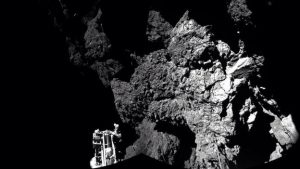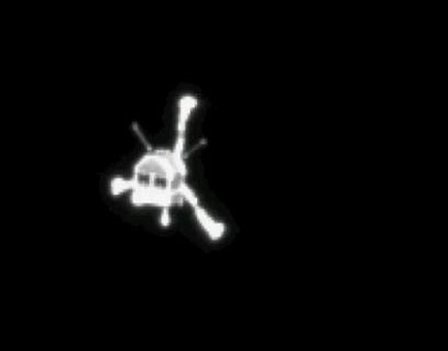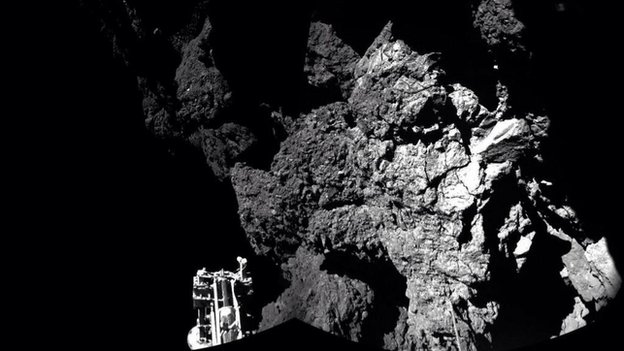
Future of Philae Lander is Uncertain – ‘Time for risks’ Says Jonathan Amos
Scientists working on Philae comet lander say it is time to take more risks with the probe, amid fears its battery might die in hours. There is an expectation that the robot may be entering its last day of useable power on the ice object 67P. The European Space Agency (ESA) is due to upload commands to tell Philae to deploy its drill. The hope is that it can pull up some samples to analyse in the robot’s onboard laboratories.
About Philae Lander:
Esa’s Rosetta mission, with its piggybacked Philae lander, was launched in 2004. The pair covered 6.4 billion km to reach Comet 67P out near the orbit of Jupiter. Scientists hope the investigations at the giant “ice mountain” can provide fresh insights on the origins of the Solar System. Comets are believed to hold materials that are largely unchanged since the formation of the planets 4.6 billion years ago. One theory holds that comets were responsible for delivering water to the early Earth.

First of all, the technical achievement is spectacular. It’s the first time humans have landed anything on a comet. Comets have negligible gravity so it’s hard to establish an orbit around comets. Also, landing there is difficult because there’s a risk of the lander simply bouncing off the surface of the comet. Comets are also very mobile, with often irregular orbits, bringing even more problems to the table
Philae Made History:
Philae made history on Wednesday when it was dropped by Esa’s Rosetta satellite to the surface of 67P – the first time this feat has been achieved. The probe has been returning pictures and other scientific data ever since. It is not known precisely where on the comet the robot is located, but the pictures it has returned indicate it is in the shadow of a cliff. The limited sunlight the probe receives means its solar panels cannot keep the battery systems properly topped up.
The lander bounced twice, initially about 1km back out into space, before settling in the shadow of a cliff, 1km from its intended target site. It may now be problematic to get enough sunlight to charge its battery systems. Launched in 2004, the European Space Agency (Esa) mission hopes to learn about the origins of our Solar System. It has already sent back the first images ever taken from the crumbling, fractured terrain of a comet.

This picture was taken by the lander itself just 40m from its bumpy touchdown
“We plan to rotate the lander a little bit so that at the position where we have now this one panel that gets sun, we’ll have a slightly larger panel and this would increase the chance that at a later stage the lander could wake up again and start talking to us again,” Dr Ulamec explained.
Commands were uploaded on Friday morning to deploy the drill, and early telemetry indicated it had extended 25cm from the base of the lander. However, it was then that the orbiting Rosetta satellite, which has been relaying telecommunications from the probe, passed over the horizon and out of contact. The results of the drilling will not now be known until Rosetta comes back around and tries to re-establish the radio on Friday night.
